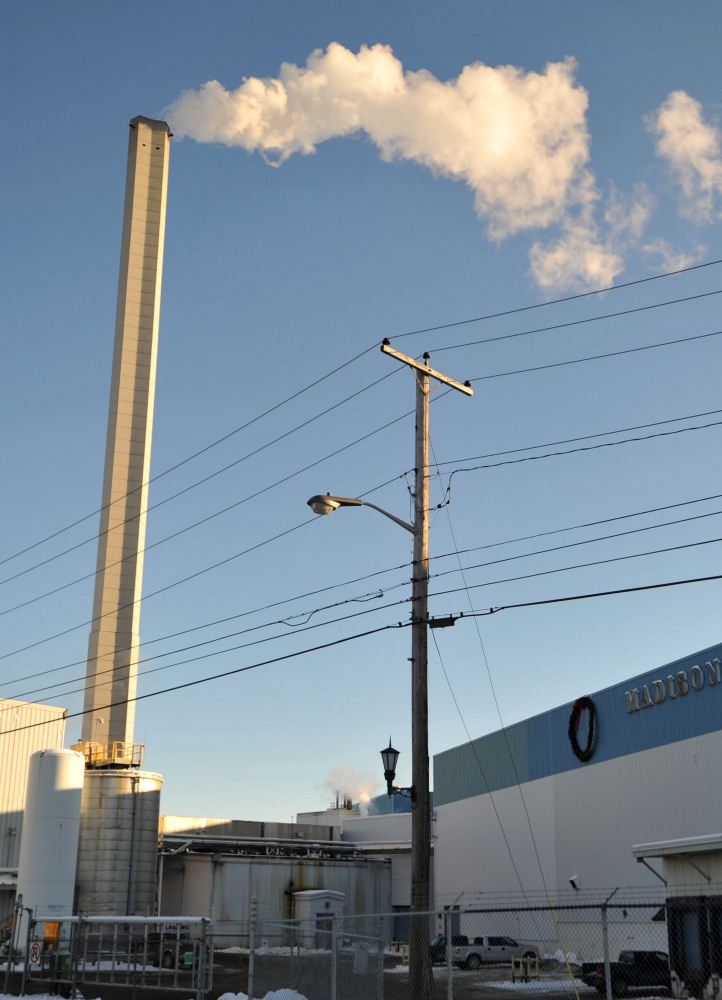“The mill workers in Madison don’t need lower income tax rates or cheaper electricity. They need jobs.” – Our View, Maine Sunday Telegram, March 20
WATERVILLE — This paper’s recent editorial rightly emphasized the importance of energy policy to Maine. However, in the quoted sentence, the editorial may understate the critical relationship between the high cost of energy in Maine and the manufacturing jobs Maine is losing with alarming speed.
The closing of the Madison mill is vivid proof of the direct effect of energy cost on jobs. For Maine to have an energy policy that meets our need for both clean energy and a strong economy, cost considerations are essential.
Put simply, if Maine had dependable year-round access to low-cost natural gas from Pennsylvania, I believe the workers at Madison Paper Industries would not be looking for new jobs today. In this case, and in too many others, high-cost energy kills jobs in Maine. The converse is also true: Low-cost energy will both protect and create Maine jobs.
Every business encounters challenges. Madison was hit by subsidized Canadian competition, a strong U.S. dollar and high energy costs. Surviving those challenges depends on hard work, good judgment, luck and the overall health of the business. High energy costs sap the health of any business. Over a long period, high energy costs discourage capital investment, employee recruitment and customer loyalty.
In the end, where competitors have lower energy costs, odds are that they will survive the challenges, and the entity with higher energy costs will not. This is precisely what is happening to Maine’s manufacturers.
Maine’s high energy costs result from several factors, but that most readily fixed is the effect of too little gas pipeline capacity in winter, when gas for heating fills the available pipes. Without dependable gas in winter, New England uses coal, oil and liquefied natural gas to make electricity, causing electricity costs to skyrocket. Mills like Madison were forced in each of the last two years to shut down for days and weeks rather than pay those costs. Before long, a mill’s customers learn how to get by without you.
The math showing our gas pipeline shortage during some 2,000 hours every normal year is simple: New England has no native gas supply and only 3.6 billion cubic feet per day of pipeline capacity to import natural gas.
On a typical winter day, New England uses 3.4 billion cubic feet per day of natural gas just for heating needs. On a cold winter day, however, New England needs 4.5 billion cubic feet per day, again just for heating. The minimum demand for gas needed for electric generation requires an additional 1 billion cubic feet per day, or we have to rely on expensive coal and oil.
This data shows that on a typical winter day, New England is short 0.8 billion cubic feet of gas and 1.9 billion cubic feet of gas short on a cold winter day. This analysis and an expectation of continued fuel switching from oil to gas support a target of 2 billion cubic feet per day of additional pipeline capacity. The need for pipeline capacity is obvious.
Adequate year-round gas pipeline capacity is also essential for solar and wind development, so that the lowest-cost and most benign fuel is available when the sun and wind are not. Otherwise we will rely on coal, oil and LNG on our many cold, still winter nights, and that is a fool’s errand.
It is incorrect to imply that Maine mill workers should become solar installers. Maine’s economy will suffer as manufacturing withers because of high energy costs, and that will make consumers less willing and less able to pay the somewhat higher costs of wind and solar.
Instead, if we have adequate gas pipeline capacity, the consumer savings of some $250 million per normal year will sustain and grow manufacturing and leave room in budgets to fund the transition to more renewables and increased energy efficiency. We will end our persistent reliance on coal and oil plants and gradually reduce our use of natural gas as we develop more renewables and energy efficiency.
Maine must learn from the loss of the Millinocket, Lincoln, Old Town and Madison mills. We must realize that lower-cost energy from adequate, year-round natural gas pipeline capacity is essential to both good jobs and the cleaner energy future we all desire. Cooperating to this end is clearly in the public interest.
Pitting compatible solutions such as solar and natural gas against one another as false adversaries is not in the public interest. With the pipeline capacity we need year round, we will have a cleaner, stronger society.
Send questions/comments to the editors.



Comments are no longer available on this story